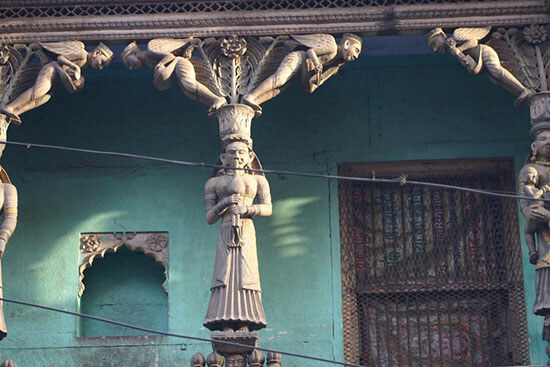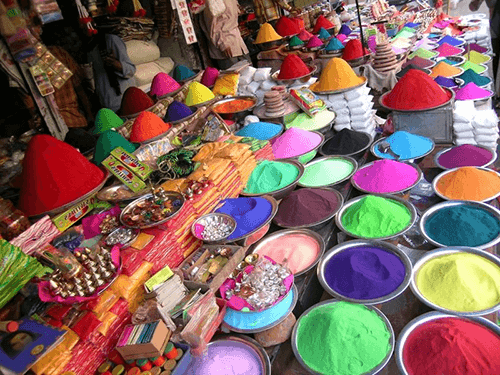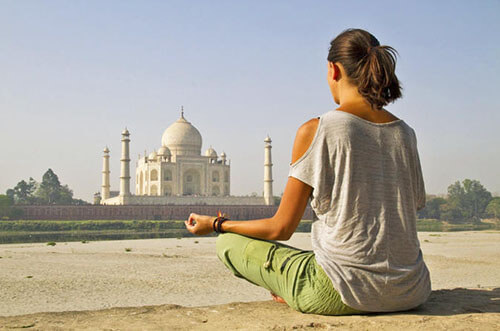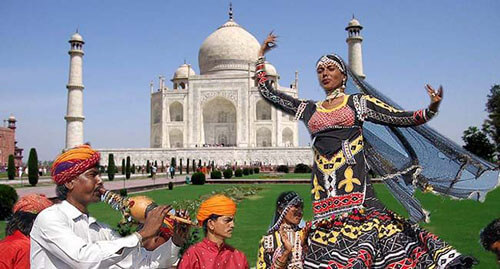Mughal Heritage Walk is an exclusive concept that provides a snapshot to the tourists about Kachpura village, wherein one can Witness the colourful traditions and customs of its inhabitants and simultaneously interact with the village people. The villagers welcome their guests by extending them their traditional welcome incorporating Aarti Thali and flower garland. The Mughal heritage walk along its 1.5 kilometre pathway helps one understand the real Indian culture and tradition. The influence of the Mughal era on the current residents can also be studied thoroughly. The villagers being a part of the heritage for such a long time are the best guides for their area. Its here that one has the opportunity to embark on to the Tea Terrace that offers a breath-taking view of the Taj Mahal like none other.
The walk give you a glimpse of three magnificent Mughal jewels Gyarah Siddi, Mehtab Bagh, and Humayun’s Mosque whereas an spectacular view can be witnessed of the magnificent Taj Mahal and the Agra Fort. The Mughal Heritage Walk involves trained local youths who guide tourists through the lesser-known monuments in and around Kuchpura. The visitors may also avail an opportunity to buy exclusively designed trinkets & souvenirs which are created to keep the traditional practices alive. The incentives collected are used to enrich the community fund & is also divided among the artists & artisans.
The walk give you a glimpse of three magnificent Mughal jewels Gyarah Siddi, Mehtab Bagh, and Humayun’s Mosque whereas an spectacular view can be witnessed of the magnificent Taj Mahal and the Agra Fort. The Mughal Heritage Walk involves trained local youths who guide tourists through the lesser-known monuments in and around Kuchpura. The visitors may also avail an opportunity to buy exclusively designed trinkets & souvenirs which are created to keep the traditional practices alive. The incentives collected are used to enrich the community fund & is also divided among the artists & artisans.
Normal communities in neighbourhoods near the famed Taj Mahal, in Agra, face serious environmental and livelihood crises. The lack of proper sanitation and sewage networks deters tourists from visiting and threatens the city of Agra's economic potential. The pilot programme improved Kuchpura’s sanitation by building toilets, paving streets, and improving drains. The community also sought help from the private sector for the improvement & upgradation of the unsanitary waste-water drain abutting their settlement.
The community-driven approach to Agra’s slum upgrading has helped city officials to engage positively with slum dwellers as a part of its upliftment Program, CURE, the NGO sought funds from USAID for slum upgradation and designed the Mughal Heritage Walk to enable poorer communities to derive livelihoods from tourism while improving their living conditions. The slum dwelling community was asked to map the surrounding areas and grouping monuments into walks. After deciding the route, the community not only researched but also gathered information on the monumental heritage and produced information for the visitors. The Heritage Walk is nearly less than a mile loop that guides you to the village of Marwari Basti, the ancient village of Kachpura, Mehtab Bagh, the Mughal aqueduct system, the Humayum mosque, and the Gyarah Sidi. The Walking trail is contributing as a business enterprise, which builds capacities of Heritage Walk Leaders to manage the enterprise themselves and support the activity by using resources and credit available. In order to cater to the increased demand and heightened tourism, maps, souvenirs, and scrolls are created for sale. The community has used the revenue generated through the tours to improve sanitation conditions and create walkways, access roads, and signage in the settlements along the route.
This support has enabled Agra to prepare an inclusive city development strategy, based on hard data on the informal settlements, and to launch two pilot projects─the Mughal Heritage Walk and a partial upgrading of the Kuchpura settlement. The Municipal Corporation of Agra then developed an inclusive, citywide slum upgradation plan for the first time to address burning issue of slum upgradation for the first time in India.







